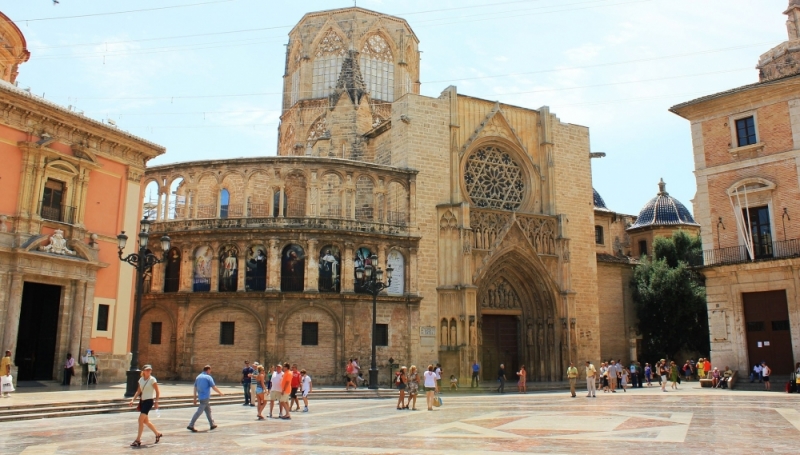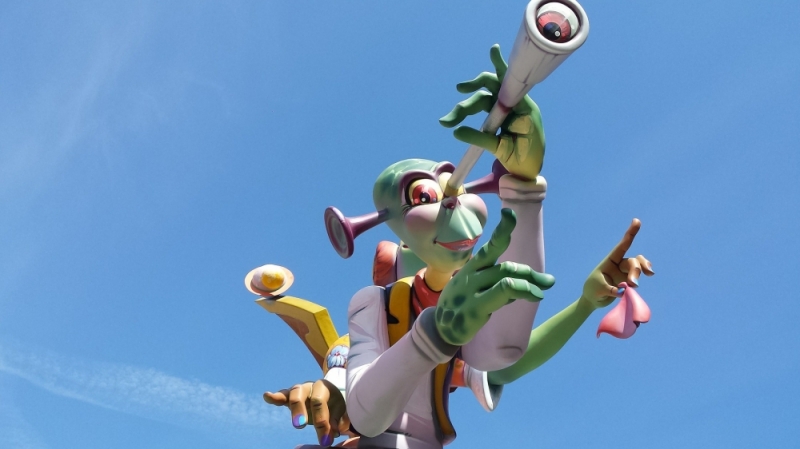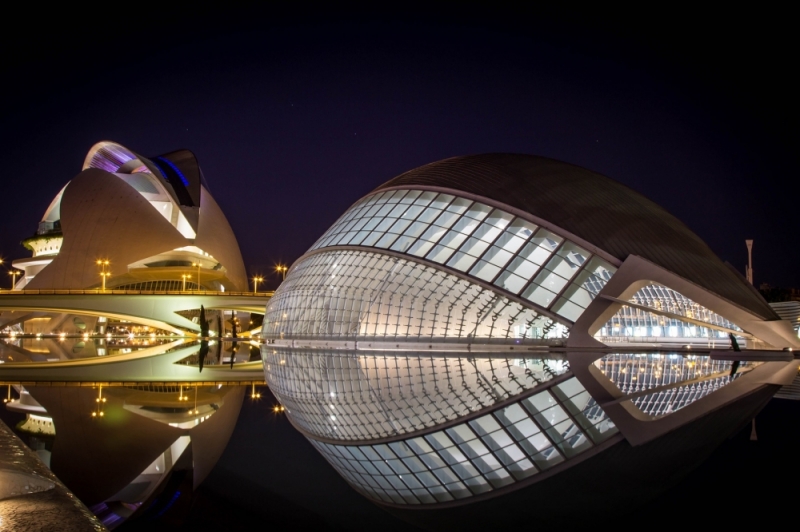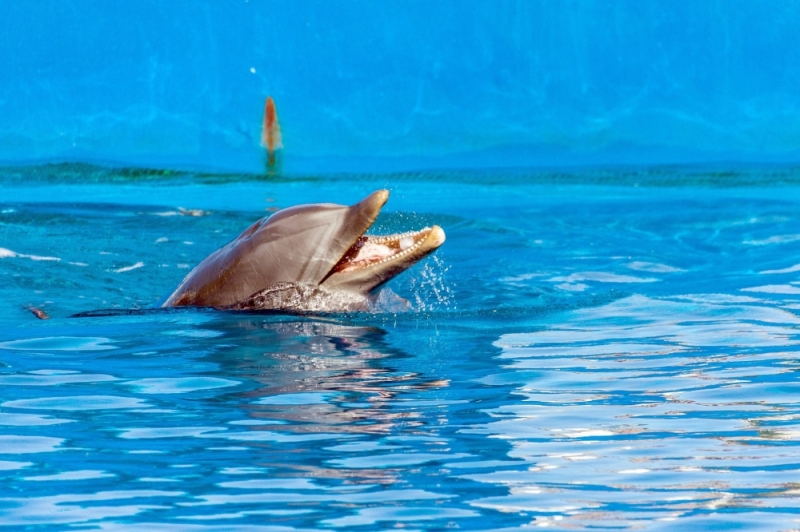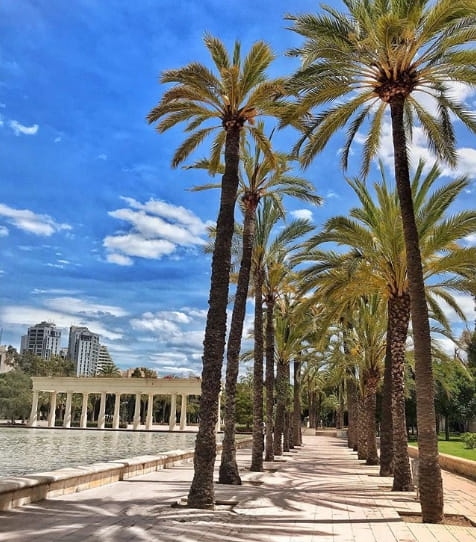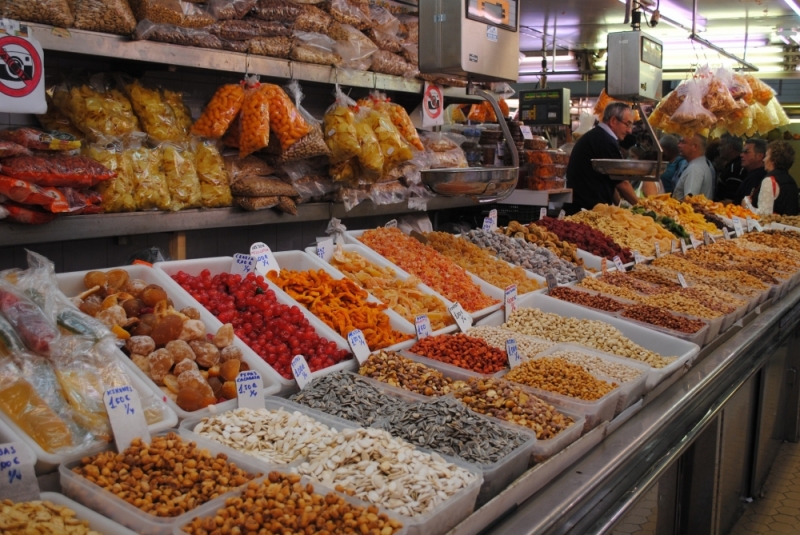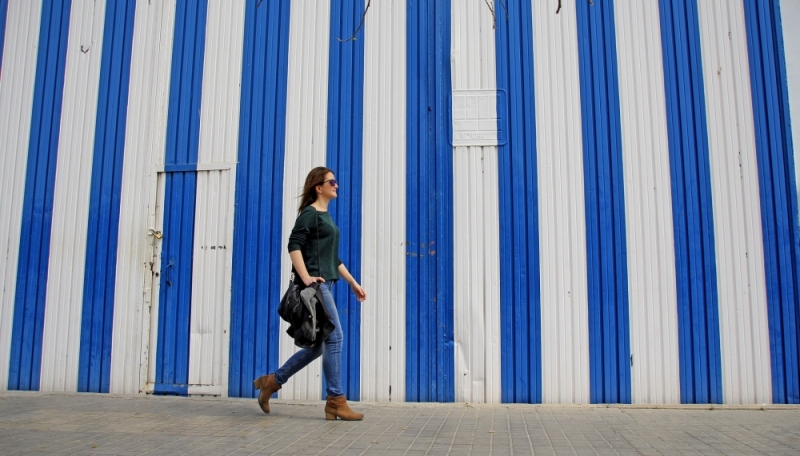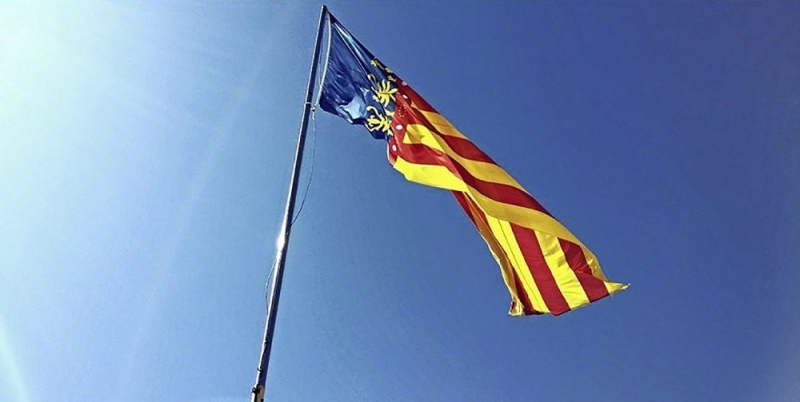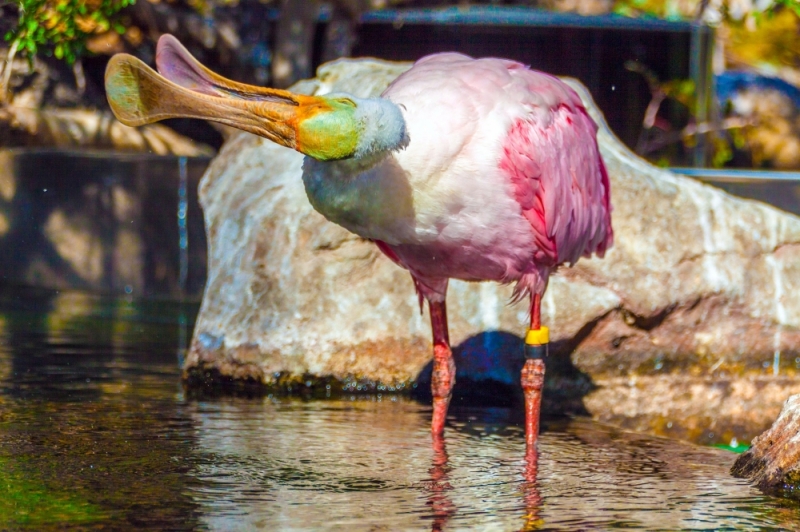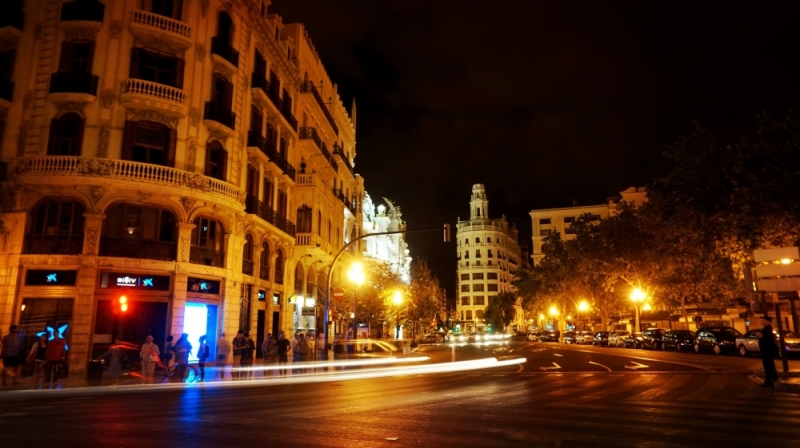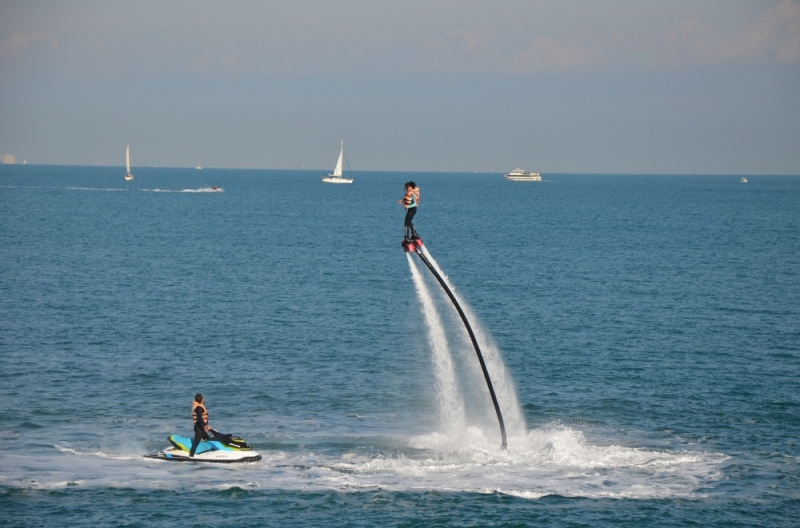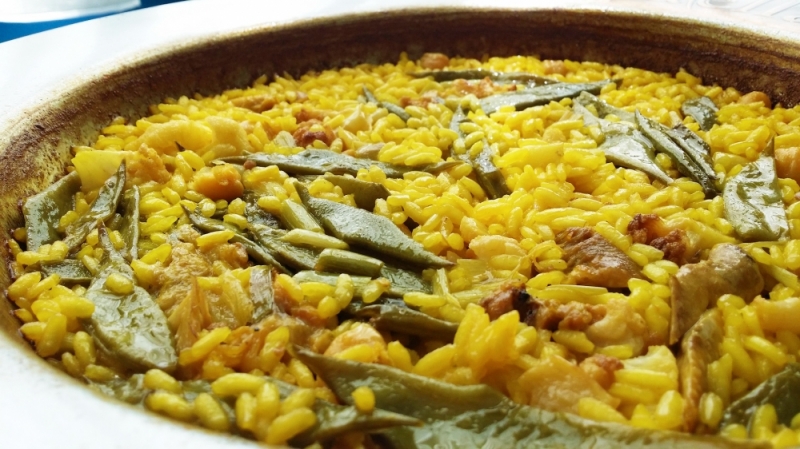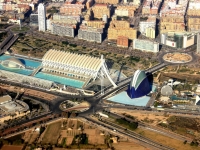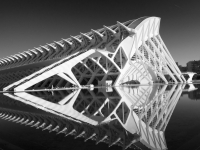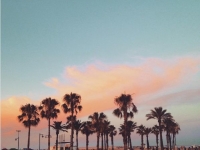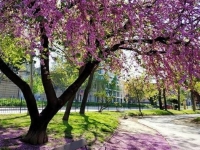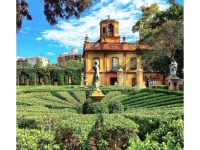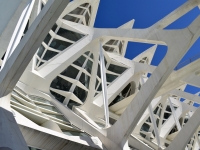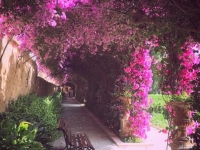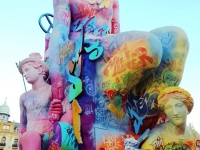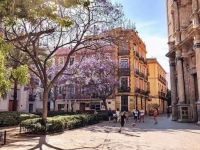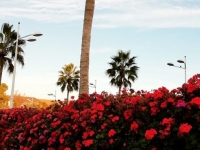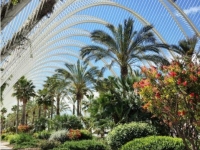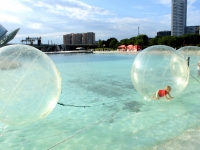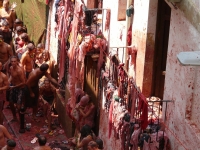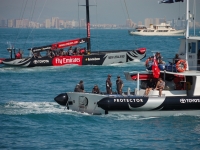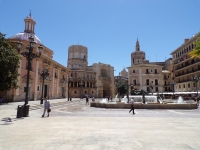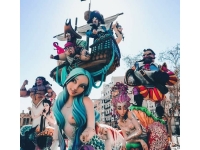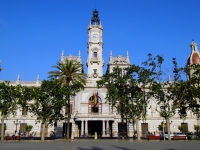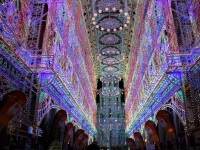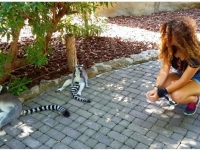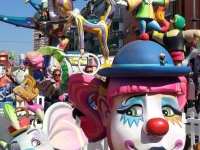Valencia and its origins
Valencia has Roman origins that date back to the 2nd century. BC they settled in place of the indigenous Iberian populations. Even the name has changed over the course of history, going from Valentia Edetanorum to Balansiya, during the domination of the Arabs. The city had its development with Decimus Junius Brutus, but in the 1st century. BC, the city was razed to the ground due to the struggles of the Roman Empire. The entire area was repopulated at the beginning of the new millennium by Roman colonists, and was reborn at an urban and territorial level. The structure of the Roman settlement was concentrated in a central forum within which there were administrative and religious complexes, surrounded by a structure which, based on the ancient urban geometry, contained the villas of the nobles. In fact, Roman Valencia was decorated with marble and paintings, which made it architecturally beautiful. The beginning of the decline phase of the Roman Empire also led to the decline of the city and, in fact, there were radical changes for the city in 304 AD. The first important event was that of the martyrdom of Saint Vincent (now the patron saint of Valencia) who was captured and tortured by the Romans for having defended his Christian faith. In the following 9 years, Christianity became the official religion of the Roman Empire and the Christian community managed to take over the Roman Senate. In the 5th century the city was conquered by the Visigoths and managed by the monarch of Toledo who, due to bad administration, led to the economic and urban decline of the city. In 711 the city fell into the hands of the Moors, starting a new era. Thanks to them the city reached its maximum splendor, thanks to the trade of olives, rice, paper, silk, ceramics and precious materials. Numerous monuments dating back to this period attest to the grandeur of that period, such as the ancient walls, Portal de Valldigna, Baños del Almirante, the Cathedral and Tower of Valencia and el Miguelete. The city was conquered in 1094 by Rodrigo Díaz de Vivar, known as El Cid Campeador, but a few years later the city was reconquered by the Muslims thanks to the Almoravids. It was James I of Aragon who took back the city by founding the Kingdom of Valencia and, the day of his arrival in the city, is still celebrated today with the Parade of the Moors and Christians. The city, between the 15th and 16th centuries. lived the Golden Age, as one of the most powerful cities in the Mediterranean. There was also considerable cultural and artistic growth, thanks to artists of the caliber of Joanat Martorell, Ausias March, Isabel de Villena and many others. Emblem of the splendor of the city in those times, is the Lonja de la Seda, a wonderful building dating back to the mid-1400s, declared a World Heritage Site by UNESCO in 1996 with the name of "The Silk Road" in reference to the market of Valencian silk, which had a strong development thanks to the influence of Islam. In the 13th century. there was again a period of decline, following the expulsion of the Moors and the Jews, and the first conflicts between the nobility and the rest of the population took place. During the Spanish Civil War, the city was in favor of Archduke Charles of Austria, but the opposing faction, led by Philip V of Bourbon, won, so Valencia lost its privileges. From that moment the city went into a period of decline that lasted two centuries. The history of Valencia since the 19th century it can be linked to that of Spain, the ideas of liberalism and reactionary absolutism came from France; when the French left the city in 1813, the Spanish monarchy was re-established with the coronation of Ferdinand VII. Among the citizens, the idea of nationalism spread.
What see
Valencia is the third largest city in Spain and one of the most important in the Mediterranean. Between the XX and the XXI century, the city has become one of the most popular destinations in Europe, in fact today tourism is the first economic resource of the country, thanks also to the atmosphere that is breathed in the city: a fusion of ancient and modern.
Santa Maria Cathedral of Valencia
We advise you to start your tour starting from the Catedral Santa Maria de Valencia (or Seu), primarily because it is located in a central area and, secondly, because, through the fusion of different styles such as Gothic-Romanesque, Baroque and Neoclassical , it is possible to reconstruct the artistic history of the city. The church was built in the XIII century. instead of an Arab mosque, which in turn was built on a pagan temple. The church, with three naves and a Latin cross, was built at the behest of James I of Aragon. There are three entrance portals (Puerta del Palau; Puerta de los Hierros and Puerta de los Apóstoles), the Diocesan Museum and the Santo Caliz Chapel, where the Holy Grail is located (the cup from which Jesus Christ is believed to have drunk during the last dinner, the "El Miguelete" tower is not to be missed, from which you can admire the city, after climbing (only) 200 stairs.
Town Hall Square - Las fallas
Near the church, you will find Plaza del Ayuntamiento or, as the Valencians would say "Plaça de l'Ajuntament". Also in this square you will notice the mix of different architectural styles, in particular neoclassical and modernist, which testify to the (relative) contemporaneity of the buildings, most of which were made at the beginning of the 20th century. In addition to the Town Hall , the Post Office Building (Edificio de Correos y Telegrafo) is also worth a visit. During the period of the dictatorship, the square housed the statue of Francisco Franco, which was promptly replaced, once the dictatorship was completed, with that of Francesc de Vinatea (a knight who during the 14th century opposed the king Alfonso IV Aragon). Plaza del Ayuntamiento also celebrates Las Fallas, the most important town festival, Intangible Heritage of UNESCO Humanity.
City of Arts and Sciences
One of the major tourist attractions of the city is the Ciutat de les Arts i les Ciènces , an architectural complex of buildings created by Santiago Calatrava and Felix Candela, composed of five different structures: El Palau de les Arts Reina Sofía which is the theater of the work of the city and is the seat of the Orchestra de la comunidad valenciana. It is a building over 75 meters high and occupies an area of 40,000 square meters. The Hemisfèric, the first to be opened to the public in 1998, is in the shape of an eye and inside is the largest cinema in Spain. The Umbracle, a public garden where you can stroll along the "Paseo de las Esculturas".
Oceanographic Park of Valencia
The Oceanographic Park of Valencia , on the other hand, is one of the largest aquariums in Europe, where you can see more than 40,000 different species of aquatic animals. The Principe Felipe Science Museum is an interactive scientific museum with a form similar to the skeleton of a dinosaur. The Pont de l'Assut de l'Or , is a bridge that crosses the Jardí del Túria and has a 125 meter high pylon, which is the highest point in the city. The Agora is the monumental building of Calatrava, a metal structure covered with blue trencadís, in which numerous events are organized. For visiting hours, consult the official website: www.cac.es
Garden of the Turia
The Jardí del Túria has a very particular history. In 1957 the city of Valencia was hit by the flooding of the Turia river, so much so that the press called it "gran riada de Valencia". The government, then led by Francisco Franco, thought of diverting the course of the river to prevent it from happening again. It was thought to turn his old bed into a highway, but the local ruling class objected and from there the Jardí del Túria was born, a green lung almost 10 kilometers long. La Lonja de la Seda or Lonja de los Mercadores, is the emblem of the business that Valencia had during the 14th century, in fact it was in this late-Gothic building that negotiations took place. The structure is a UNESCO World Heritage Site and every Sunday hosts an antique market that we recommend you to see.
Mercado Central Valencia
Opposite the Lonja de la Seda, there is the Mercat Central , a modernist structure that has been among the best markets in Spain since 1928, together with the Boqueria of Barcelona. Through the architectural details of the building, it is possible to notice the influence of the modernist style, marked by the extravagance that the lines of the building assume, despite having maintained the previous Arab features. The rule in this market is only one: getting lost. There are so many different smells and tastes that, after stalling, you will do a gastronomic tour that you will hardly forget. We recommend the Central Bar, by chef Ricard Camarena, where you can try typical dishes, such as patatas bravas and chipirones with pancetta. In case you feel like having a nice fresh prawn , there is the El trocito restaurant of the middle , which for the modest sum of 4 euros will cook what you bought at the counter.
The Valencian Institute of Modern Art
One of the strong points on which Valencia has reached its tourist primacy is culture. In fact, the gains achieved thanks to the numerous museums have led to an increase in the GDP of the city and the region. The Institut Valencià d'Art Modern , was inaugurated in 1986 and has over 11,000 works including painting, sculpture, photography and video-installations. On one side we find the works of Ignacio Pinazo and Julio Gonzales, while on the other we find works dating back to the early 1900s in Spain. Before leaving the building, we advise you to see the Sala de la Muralla, built with the remains of the medieval fortification of Valencia.
College of the Patriarch - Museum of Fine Arts
The College of the Patriarch , is one of the most important testimonies of the Spanish Renaissance, while from the religious point of view, it is the symbol of the Counter-Reformation. In fact it was built at the behest of the Archbishop of Valencia Juan de Ribera (El Patriarca), one of the best known advisers of the precepts sanctioned by the Council of Trent. Inside there are fantastic works of art and, on the ground floor, there is the cloister with a colonnade built according to Brunelleschi's perspective method. Not to be missed is the Nau, home of the University of Valencia, in the Plaza Patriarca. Together with the college we also recommend seeing the Museum of Fine Arts, which began as a seminar to form new ecclesiastical classes and later became a branch of the Royal Academy of Fine Arts of San Carlos de Madrid. The collection has an archaeological part, with ancient pieces from Roman times and a pictorial one, with works by exponents known to Spanish painting, such as Velasquez, Ribalta, Goya, Sorolla and many others.
Bio Parco Valencia
The biopark, inaugurated in 2008, is a zoological garden where animals live in an environment probably reproduced in their habitat. Inside we find zebras, storks, warthogs, gazelles, hyenas, giraffes, lions, buffaloes, gorillas etc. Among the various species there is also the Oritteropus, also known as "land pig", an endangered species present in sub-Saharan Africa and, just in 2018, a new specimen was born belonging to this species. internal of the Bioparc. Valencia is not only a cultural destination, but also a seaside resort: the city beaches are Las Arenas and Malvarrosa or the Patacona; to the south of Malvarrosa there are also the beaches of the Albufera park: Playa de l'Arbre del Gos, Playa de El Saler or Playa de la Devesa. You can turn the Albufera both by boat and by tourist bus.
Barrio del Carmen
In addition to the modern and avant-garde side of the city, there is the ancient center: the Barrio del Carmen , which owes its name to the church and convent of the Carmen Calzado, and is the historic heart of Valencia. It was delimited for a certain period by the Muslim wall and, to date, the most emblematic medieval remains are the Serranos Towers and the Quart Towers. Streets like Roteros or Corona, represent the extension of the ancient arrabales (suburban neighborhoods). Inside the neighborhood there are the Portal de la Valldigna, the frescoes of the church of San Nicola, the Plaza del Árbol, the small Casa de los gatos, and some historical shops. The Carmen is also a bohemian neighborhood, with rich art streets and avant-garde museums. Also worth a visit is the Palacio del Marqués de Dos Aguas , characterized by particular external decorations, including the alabaster door from 1745. The palace houses the national museum of ceramics and sumptuous arts.
Movida and Entertainment
If you are planning a trip between February and March, Valencia is the destination for you. From the last Sunday of February until March 19, Las Fallas (Falles in Valencia) are celebrated every year, traditional festivals declared as Intangible Heritage of Humanity for UNESCO.
The Fallas take their name from the artistic creations made of combustible materials, such as wood and papier-mâché, which represent various Valencian figures. The nightlife in the city develops in different neighborhoods and the nightlife is really lively. The shops close at 21:00 and it is possible to have dinner even after 22:00. Cafes are open from 8:00 am until late and, instead of the usual coffee, you can try the "carajillo", coffee with brandy. In the heart of the university area is Blasco Ibañez Avenue, a boulevard of the university that runs through the city, where bars and pubs are open all day. Here you can breathe an indie atmosphere, there are underground bars and the streets are full of young students. We recommend that you go for a walk in the barrio del Carmen, the bohemian quarter of the city and explore its narrow streets. The city at night is lively, but you will still be surrounded by a relaxing atmosphere. We advise you to take a walk on Calle Caballeros and try one (or more) bars in vogue like the Cafè Negrito (for rock fans), the Ghecko with an Afro-Asian atmosphere and the Café Bahiano, with a Brazilian style.
The Fallas take their name from the artistic creations made of combustible materials, such as wood and papier-mâché, which represent various Valencian figures. The nightlife in the city develops in different neighborhoods and the nightlife is really lively. The shops close at 21:00 and it is possible to have dinner even after 22:00. Cafes are open from 8:00 am until late and, instead of the usual coffee, you can try the "carajillo", coffee with brandy. In the heart of the university area is Blasco Ibañez Avenue, a boulevard of the university that runs through the city, where bars and pubs are open all day. Here you can breathe an indie atmosphere, there are underground bars and the streets are full of young students. We recommend that you go for a walk in the barrio del Carmen, the bohemian quarter of the city and explore its narrow streets. The city at night is lively, but you will still be surrounded by a relaxing atmosphere. We advise you to take a walk on Calle Caballeros and try one (or more) bars in vogue like the Cafè Negrito (for rock fans), the Ghecko with an Afro-Asian atmosphere and the Café Bahiano, with a Brazilian style.
If you are in Plaça de la Mare de Déu, you can go to the Café Sant Jaume, where you can try the agua de Valencia, a drink made from orange juice, gin and cava (a Spanish sparkling wine). You can also taste the famous Valencian cocktail in the Parisian bar, the Cafè de las horas. This historic cocktail was first made in 1959 by the Galician painter Constante Gil, in the Cerveceria Madrid bar in Valencia. For jazz lovers, there is the Jimmy Glass Jazz Bar, where you can have a drink in an atmosphere of soft lighting and good jazz in the background. Another neighborhood very popular with young people is the Ruzafa, a neighborhood full of cafes-bars or bookstores, like Ubik cafè or El soho terrace. The bars close at 2:00, and at that time you can head to the clubs, such as La Flaca, the Bounty and Latex and the Biscuit Club. In summer, in Valencia you can experience the waterfront a lot, both day and night. You can try places like Las Animas del Puerto or the La Marina Beach Club discotheque. If you turn the city in the morning or in the afternoon you should definitely try the Horchata de chufa, a refreshing drink made with water, sugar and chufa milk, a sweet tuber obtained from the plant Cyperus esculentus. We recommend you try it from Horchateria Santa Catalina, a historical horchateria, perhaps accompanying the horchata to a buñuelo de Valencia, a typical dessert. If you fancy an aperitif, you can't miss sangria and tapas, the winning combination, going from Casa Montana, Cafe Infanta Kram Bar and many others. You can't leave the city without trying the typical Valencian paella, made with rabbit, chicken and vegetables. We recommend you to taste the restaurant of la Riua, which is really good and, if you are a good fork, you can try other typical dishes like las croquetas de jamón. You have to call and reserve the table in advance, because the restaurant is always full.
Climate, curiosity and advice
Climate: In Valencia the climate is Mediterranean, with mild, relatively rainy winters and hot, sunny summers. The average temperature in January is 10.5 ° C while in August it is 26 ° C. The wettest season is autumn.
Curiosity : in Valencia two languages are spoken in an official manner: Castilian and Valencian and the government encourages the use of the local language. For example, the metro signs are written in Valencian with the translation in Castilian and on TV there are two channels in which Valencian is spoken: Canal 9 and Punt Dos. In Valencia there is an ancient court, which is an integral part of the city's cultural heritage, the Tribunal de las Aguas. It takes place every Thursday of the year, in front of the Virgen Desamparados Basilica, in front of the Apostles' Gate and discusses disputes between farmers. The trencadis, which we mentioned earlier when talking about the Ciutat de les Arts i les Ciències, are the ceramic fragments that the architect Santiago Calatrava used to cover the Palace of Arts, dedicated to Queen Sofia, which give the building an incredible shine and, symbolize the modern side of the city.
Tips: the airport is well connected to the city center, so you can use both line 3 and line 5 of the metro. As for getting around the city, we advise you to walk around it and enjoy every view. To reduce waiting times, we advise you to buy tickets in advance for various activities and museums, so as not to waste too much time queuing up.


